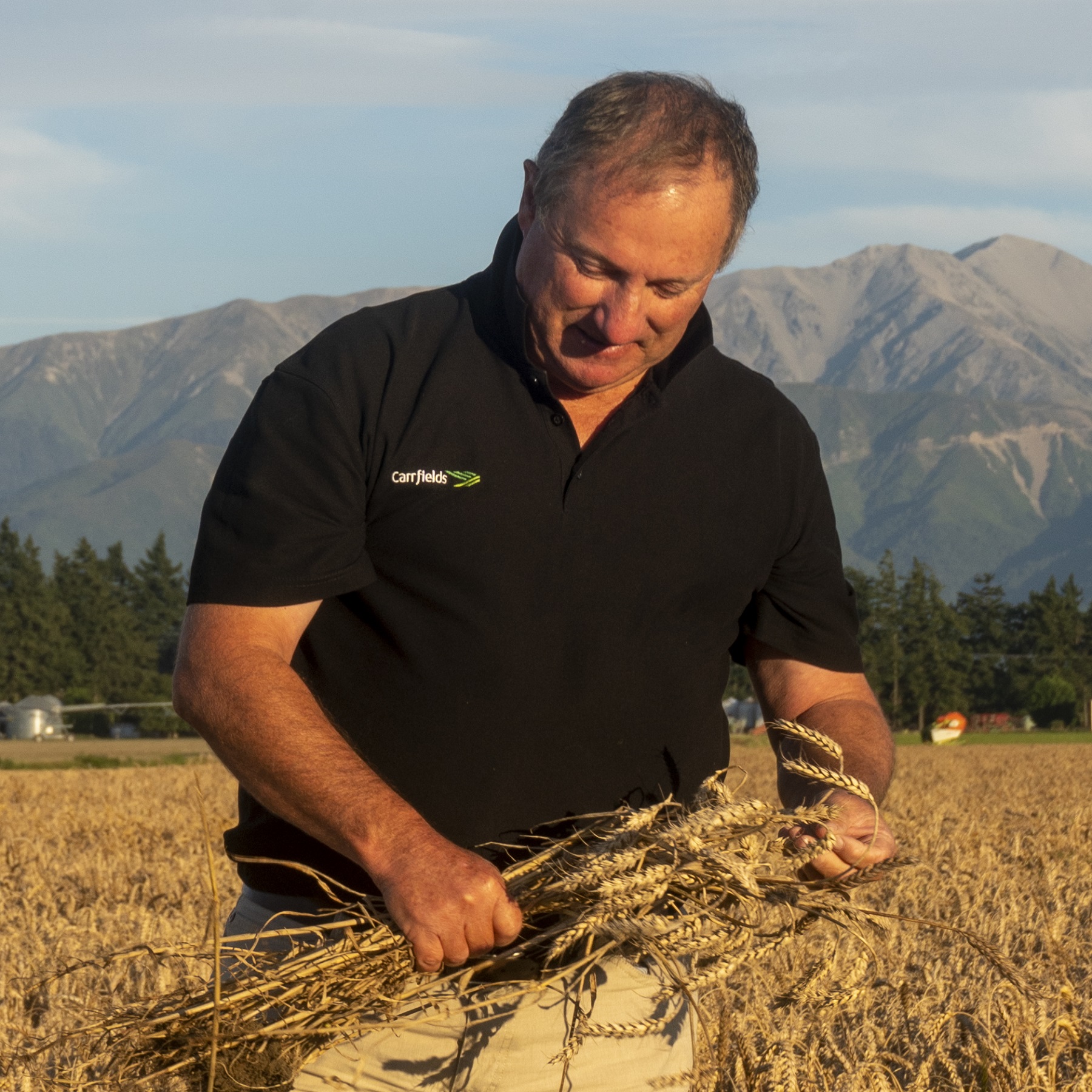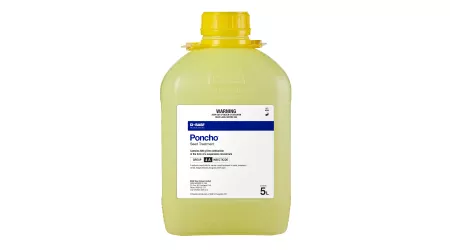As the Seed Cereal Manager at Carrfields in Ashburton, Phil Smith carries a fair weight of responsibility. The varieties he and his team supply to growers need to perform exceptionally well to make their customers’ large investment in crop inputs really pay off.
After a challenging summer, one of Phil’s customers described the harvest just finished as “one of the worst Canterbury’s had for years.’
There are many contributing factors to producing a healthy cereal yield, the main one obviously being the cultivar selected, one important consideration is the choice of treatment applied to the seed.
Kerrin, Carrfields’ current star wheat variety and holder of the World record for yield, was bred in the UK and is sold by Carrfields exclusively in NZ. It has proved an inspired choice for use in various growing conditions down here on the other side of the globe.
The seed treatment being applied to Kerrin is the relatively new Kinto® Duo as a fungicide and the well-established Poncho® for insect pest control. Both products are made by BASF.
Kinto Duo is currently Carrfields’ preferred fungicidal treatment for cereal seed crops. It’s not as well-known as some of the alternatives, but Carrfields now use it on all their wheat and barley.
Phil’s confidence in Kinto Duo is firmly based on first-hand experience.
Several years ago, Carrfields subjected Kinto Duo to their own trials in Canterbury. “We were really, really happy with the emergence. With such a quick turnaround the early vigour is always crucial, and in the autumn it’s a lot colder here early in the season. We like to get the crops up and away before winter hits.”
The differences were also noticed in the health of seed that was stored after treatment.
“Some of the older products are quite aggressive on the seed. If the seeds are damaged – with cracked casings and so on – germination is affected.
“Kinto is a lot softer on the seed. When we store the treated seed for 6 months or more, there’s no obvious sign of the seed degrading and we haven’t seen any impact on germination.”
Although it is important to protect the seed’s emergence, Kinto Duo’s primary role is disease control. “We mainly use it in wheat for fusarium and seedling rusts,” he says, “and Kinto seems to control them well.”
He confirms that he’s had good results with Kinto Duo. It deals with the early threat of fusarium and then they follow it up to 3 to 4 foliar sprays. “Most of our foliar fungicide regime is geared towards Septoria tritici.
As it happens, Kinto Duo is no more expensive than the older industry standards. So that added dimension of protecting high germination rates and promoting early vigour suggests an excellent return on investment.
Whereas trial work convinced the Carrfields team to switch to a newer product for disease control, they haven’t seen any reason yet to stop relying on Poncho to manage early insect pressure.
“Although there are alternatives to Poncho available,” Phil says, “we prefer to stay with something we can rely on. Currently, all the autumn wheat and barley gets treated with Poncho.
The biggest pest targets are grass grubs and aphids, with the biggest concern being the danger of aphids spreading barley yellow dwarf virus (BYDV). “BYDV can cause a huge yield loss. Poncho gives that early window of protection.”
Recent history suggests that Carrfields found a reliable formula for success in Canterbury, where the stakes are so high.





